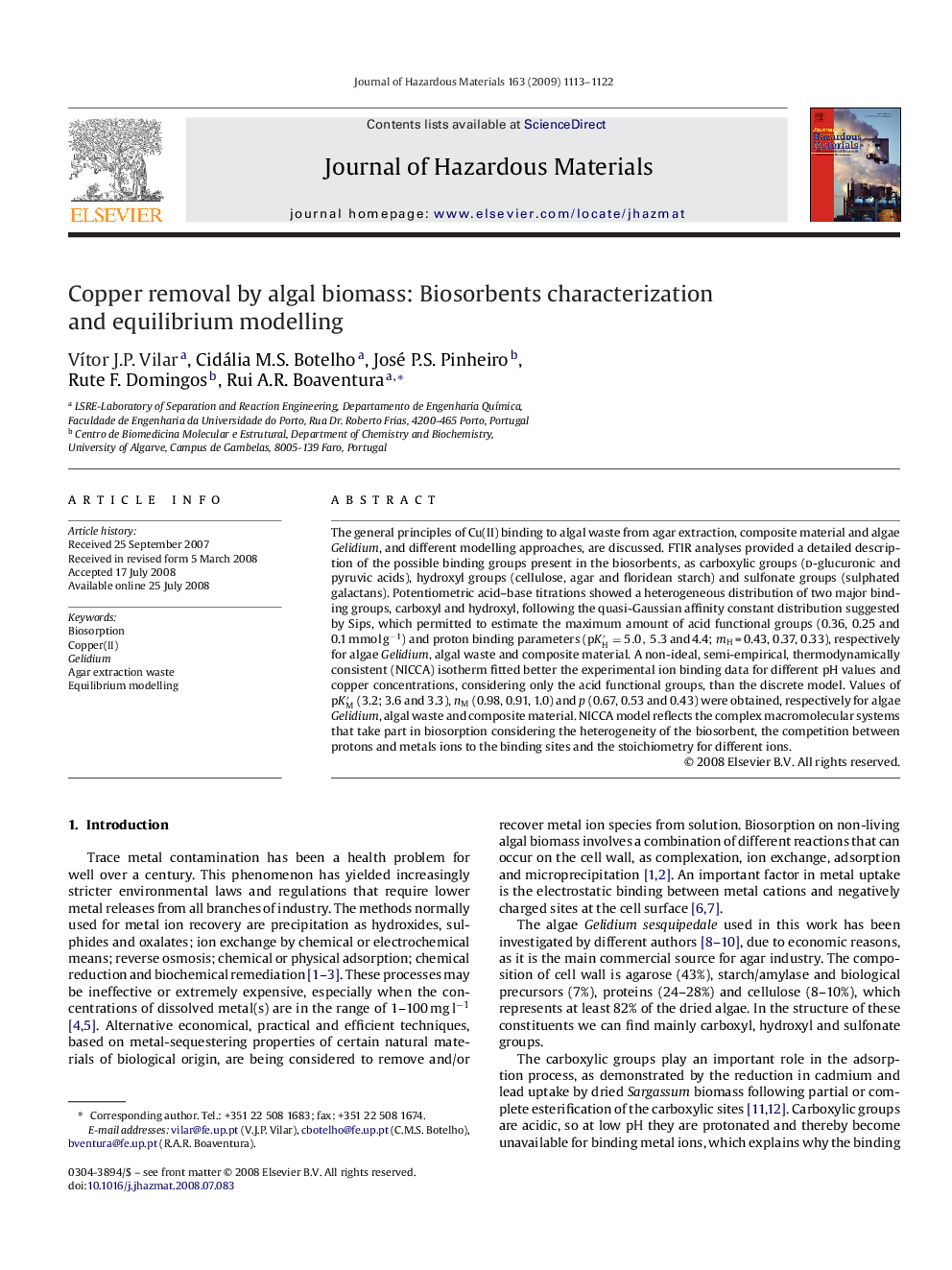| Article ID | Journal | Published Year | Pages | File Type |
|---|---|---|---|---|
| 582168 | Journal of Hazardous Materials | 2009 | 10 Pages |
Abstract
The general principles of Cu(II) binding to algal waste from agar extraction, composite material and algae Gelidium, and different modelling approaches, are discussed. FTIR analyses provided a detailed description of the possible binding groups present in the biosorbents, as carboxylic groups (d-glucuronic and pyruvic acids), hydroxyl groups (cellulose, agar and floridean starch) and sulfonate groups (sulphated galactans). Potentiometric acid-base titrations showed a heterogeneous distribution of two major binding groups, carboxyl and hydroxyl, following the quasi-Gaussian affinity constant distribution suggested by Sips, which permitted to estimate the maximum amount of acid functional groups (0.36, 0.25 and 0.1 mmol gâ1) and proton binding parameters (pKâ²H=5.0,5.3and4.4; mH = 0.43, 0.37, 0.33), respectively for algae Gelidium, algal waste and composite material. A non-ideal, semi-empirical, thermodynamically consistent (NICCA) isotherm fitted better the experimental ion binding data for different pH values and copper concentrations, considering only the acid functional groups, than the discrete model. Values of pKâ²M (3.2; 3.6 and 3.3), nM (0.98, 0.91, 1.0) and p (0.67, 0.53 and 0.43) were obtained, respectively for algae Gelidium, algal waste and composite material. NICCA model reflects the complex macromolecular systems that take part in biosorption considering the heterogeneity of the biosorbent, the competition between protons and metals ions to the binding sites and the stoichiometry for different ions.
Related Topics
Physical Sciences and Engineering
Chemical Engineering
Chemical Health and Safety
Authors
VÃtor J.P. Vilar, Cidália M.S. Botelho, José P.S. Pinheiro, Rute F. Domingos, Rui A.R. Boaventura,
